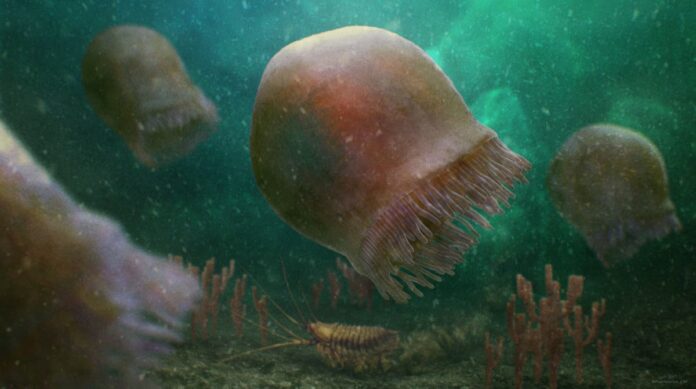Scientists have discovered the oldest swimming jellyfish species that ever lived over 500 million years ago, an advance that sheds more light on the origin of the earliest animal species on Earth. The new species named Burgessomedusa phasmiformis belongs to a group of animals called medusozoans – or animals producing medusae – which includes modern-day box jellies, hydroids, and jellyfish. Researchers, including those from the Royal Ontario Museum (ROM), made the discovery based on some exceptionally well-preserved specimens unearthed at the Burgess Shale fossil site in Canada , mostly discovered in the late 1980s and 1990s. This was a remarkable finding, researchers say, considering that jellyfish are roughly 95 per cent composed of water. The findings, according to researchers, suggest some of the anatomical features of modern swimming jellyfish such as their typical saucer or bell-shaped body had already evolved about 505 million years ago. The study, published in the journal Proceedings of the Royal Society B , analysed nearly 200 fossil jellyfish which preserved remarkable details of internal anatomy and tentacles with some specimens reaching more than 20 centimeters in length. Medusozoans are part of one of the oldest animal groups to have ever existed on Earth – a group that also includes corals and sea anemones. While previous research has unearthed fossilised polyps from 560-million-year-old rocks, shedding light on early coral evolution, the origin of the free-swimming medusa or jellyfish has remained elusive. Based on the new analysis, scientists say the species Burgessomedusa phasmiformis would have been capable of free-swimming with their tentacles enabling the capture of sizable prey. ‘Although jellyfish and their relatives are thought to be one of the earliest animal groups to have evolved, they have been remarkably hard to pin down in the Cambrian fossil record. This discovery leaves no doubt they were swimming about at that time,’ said co-author Joe Moysiuk said. The research also suggests that the food chain over 500 million years ago was far more complex than previously thought, with predation not being limited to large swimming arthropods. ‘Finding such incredibly delicate animals preserved in rock layers on top of these mountains is such a wondrous discovery. Burgessomedusa adds to the complexity of Cambrian foodwebs,’ study co-author Jean-Bernard Caron said. ‘This adds yet another remarkable lineage of animals that the Burgess Shale has preserved chronicling the evolution of life on Earth,’ Dr Caron added.
Fossils may have just revealed oldest ever known jellyfish species
Sourceindependent.co.uk
RELATED ARTICLES


